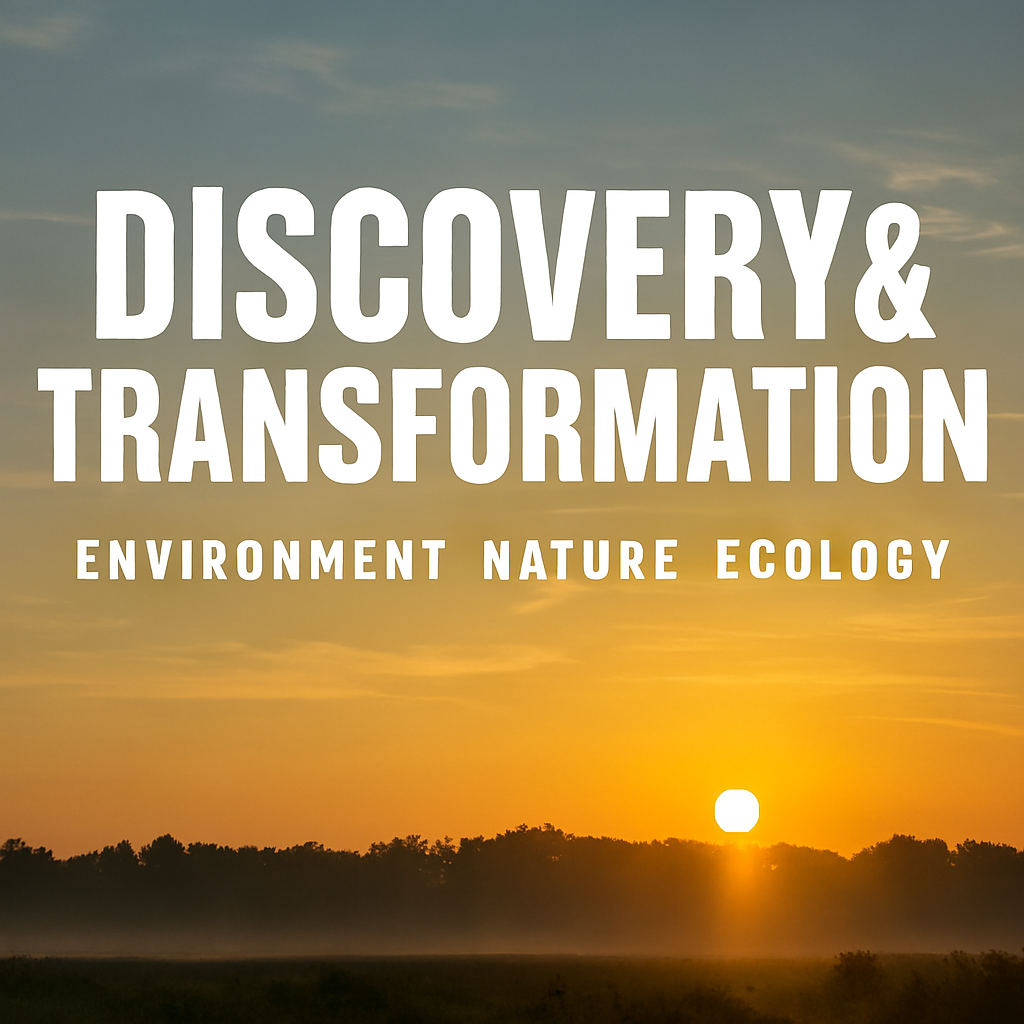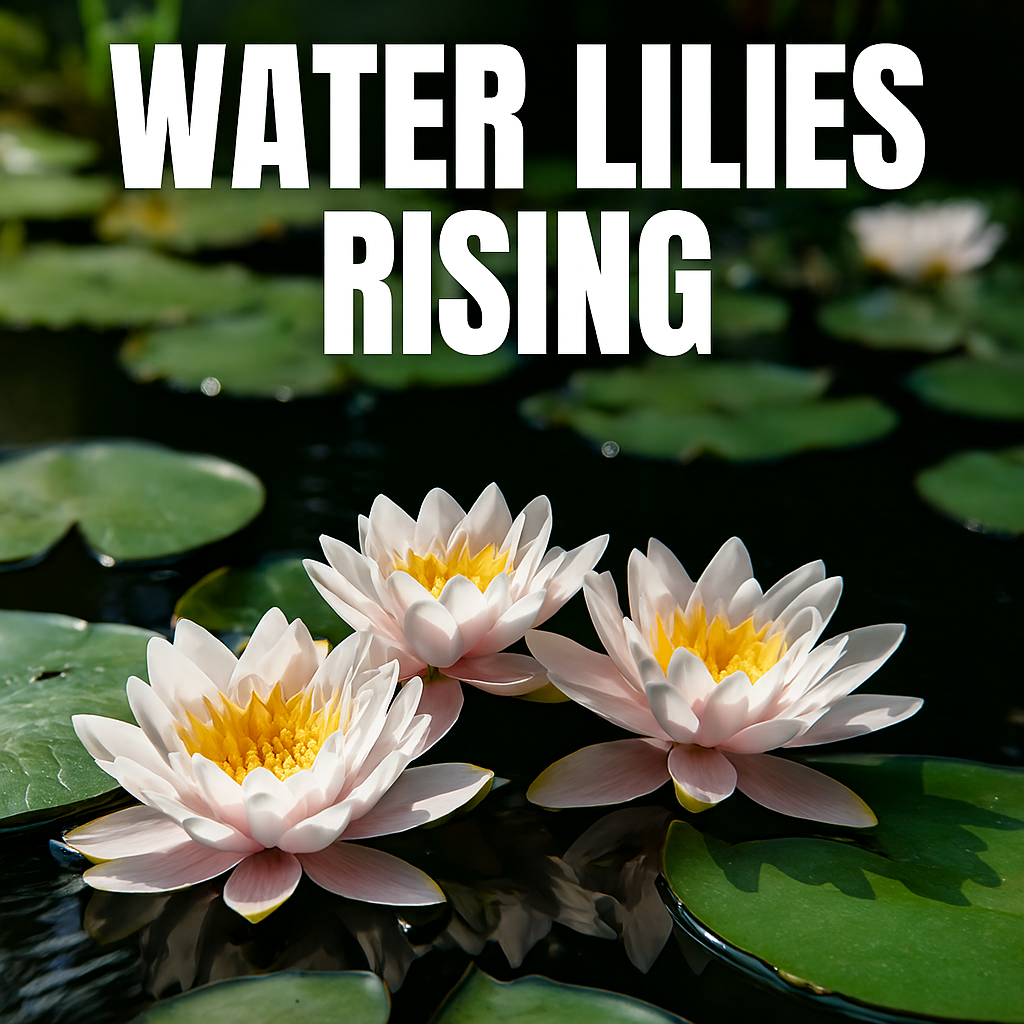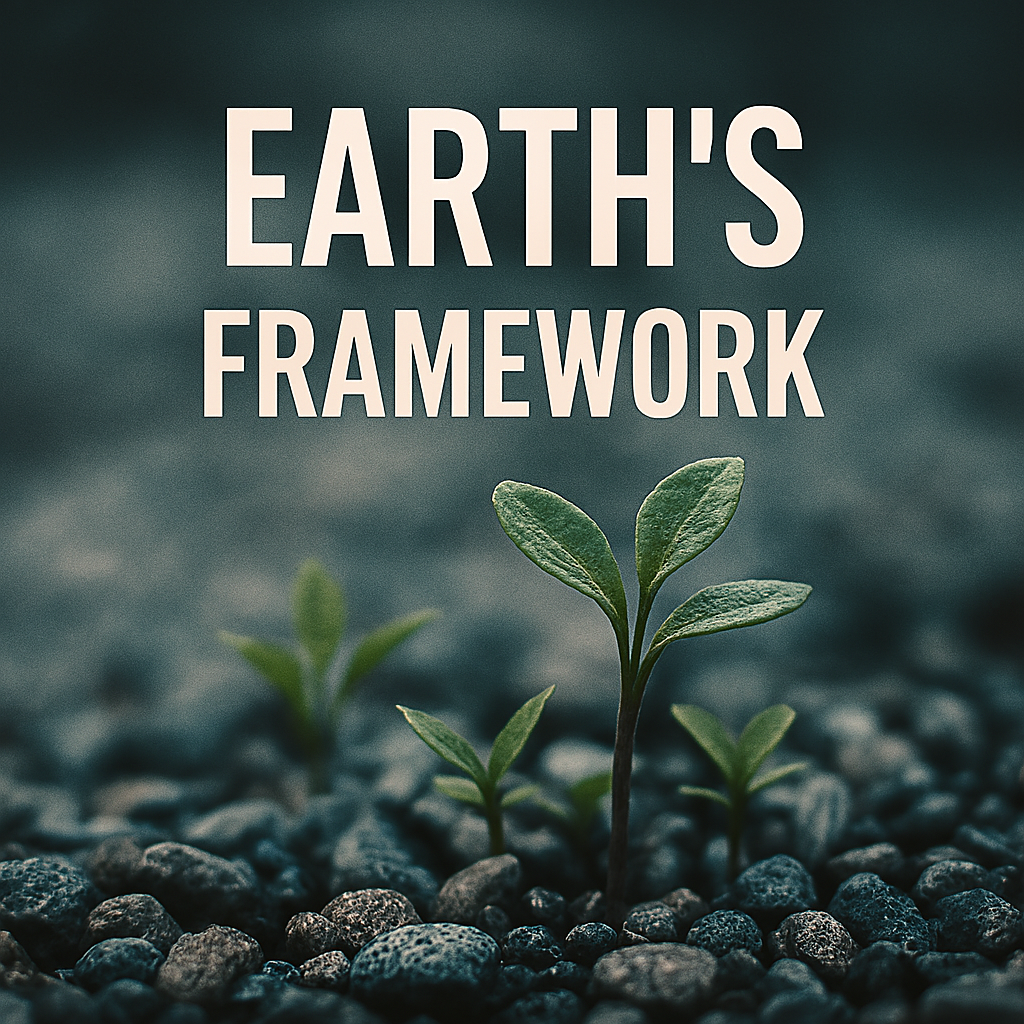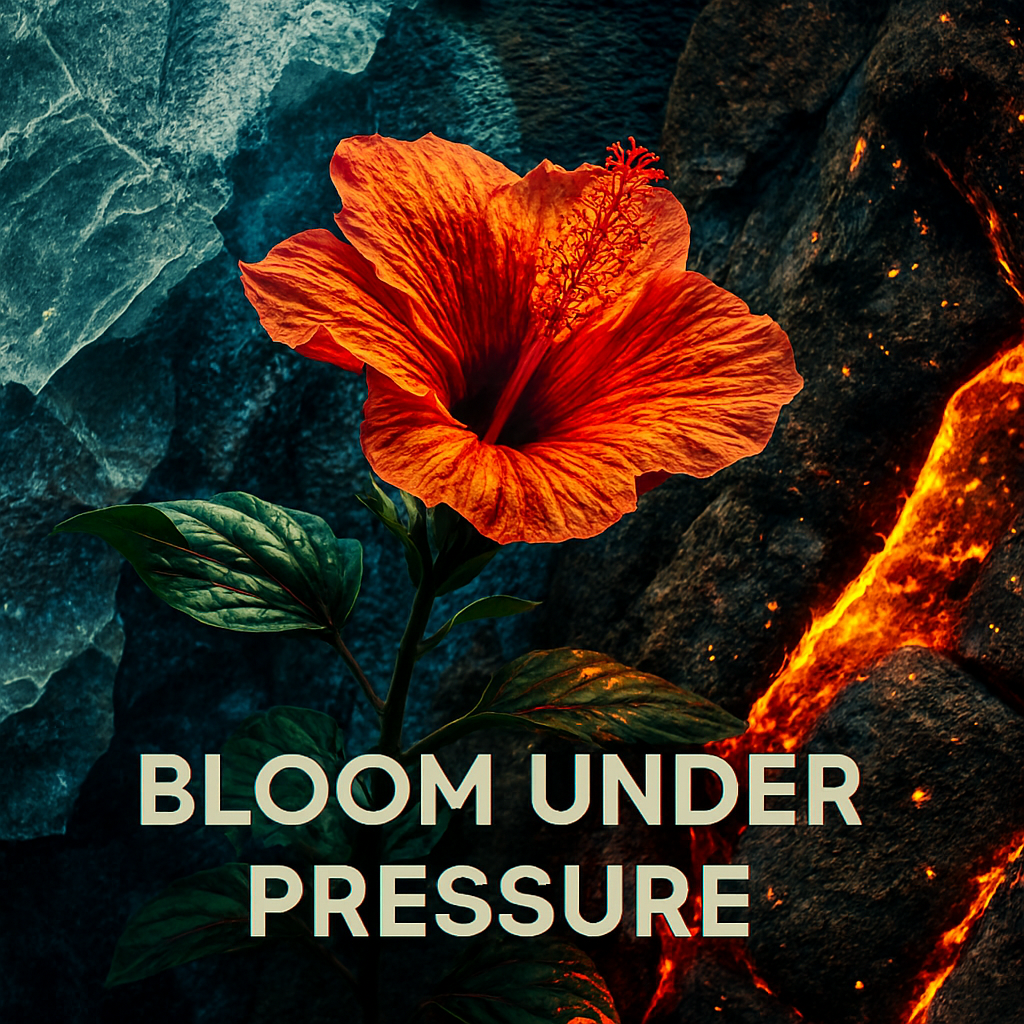Kelp Forest Recovery
Kelp forests are collapsing across temperate coastlines, and the consequences are profound. These underwater ecosystems stabilize sediment, buffer wave energy, and absorb carbon—making them essential climate infrastructure. Their disappearance signals ecological imbalance and threatens fisheries, tourism, and coastal resilience. The causes are layered, warming oceans, marine heatwaves, predator loss, and invasive species all contribute. But solutions must be equally multifaceted. The EcoReef Project offers a regenerative approach through modular eco reef-building systems known as EcoReefs.
These structures are designed to mimic natural reef complexity, providing anchoring points for kelp, shelter for marine life, and surfaces for biodiversity to recover. EcoReefs are scalable, biodegradable, and built from recycled materials like PET bottles and natural branches. In regions like Port Phillip Bay, where purple urchins have stripped reefs bare, EcoReefs can help reverse the damage.
By restoring habitat complexity, they create conditions for kelp to regrow. They also buffer sediment movement and reduce erosion. EcoReefs are not just physical structures—they’re symbolic interventions. They represent a shift from extraction to restoration. Their modular design allows for community involvement, scientific monitoring, and cultural integration. As kelp forests vanish, EcoReefs offer a way forward. They reconnect people to place. They rebuild ecological function. And they help transform barren zones into biodiverse sanctuaries.
Underwater Ecosystem Reefs And Climate Infrastructure
Thermal Stress and Microhabitat Design
Kelp species are sensitive to temperature stress. As oceans warm, their reproductive cycles falter and juvenile growth slows. EcoReefs can help mitigate these effects by creating microhabitats. Their structure alters water flow, reducing thermal exposure in localized zones. Shaded crevices and varied surfaces offer refuge for juvenile kelp. These microhabitats can extend the survivability of heat-sensitive species. In areas prone to marine heatwaves, EcoReefs act as thermal buffers.
They do not cool the ocean, but they create pockets of stability. This can be critical during peak temperature events. EcoReefs also support species that help regulate temperature indirectly. Filter feeders and algae can modulate light and nutrient levels. By fostering biodiversity, EcoReefs enhance ecosystem resilience. Their modularity allows for strategic placement.
Scientists can target zones most vulnerable to warming. Over time, these structures may support the emergence of heat-tolerant kelp strains. EcoReefs are not a cure for climate change. But they offer tactical support in a warming world. Their design reflects ecological intelligence. They mimic natural reef complexity. And they provide a foundation for adaptive restoration.
Urchin Barrens and Predator Recovery
Sea urchin overgrazing is a major driver of kelp collapse. In the absence of natural predators, urchin populations explode. They strip reefs of kelp, leaving behind ecological wastelands. EcoReefs can help rebalance this dynamic. Their structure provides shelter for predatory species like lobsters and large fish. These predators help control urchin numbers. By restoring habitat complexity, EcoReefs support trophic recovery. They also allow for manual urchin removal and monitoring.
Divers can use EcoReefs as staging zones. Over time, predator populations may stabilize. This reduces grazing pressure and allows kelp to regrow. EcoReefs also disrupt urchin movement. Their physical barriers limit grazing spread. In Port Phillip Bay, where purple urchins dominate, this is especially valuable. EcoReefs do not eliminate urchins. But they help restore balance. Predator recovery is slow. EcoReefs accelerate the process. They create conditions for ecological checks and balances. Their presence signals a shift from passive decline to active regeneration.
Sediment Stabilization and Reef Complexity
Without kelp, sediment destabilizes. It smothers reef structures and reduces visibility. EcoReefs counter this by anchoring substrates and slowing water movement. Their design mimics natural reef formations. This reduces erosion and protects adjacent habitats. Sediment stabilization is critical for kelp regrowth. Spores need stable surfaces to settle. EcoReefs provide those surfaces.
They also support filter feeders that improve water clarity. This enhances light penetration and photosynthesis. Reef complexity is essential for biodiversity. EcoReefs offer varied textures, elevations, and crevices. These features attract fish, mollusks, and crustaceans. They rebuild ecological networks. Complexity also improves resilience. Diverse systems recover faster from disturbance. EcoReefs are designed to evolve. As marine life colonizes them, they become living structures. This dynamic quality makes them ideal for long-term restoration. Sediment control is not just a technical issue—it’s foundational to ecosystem health.
Carbon Sequestration and Climate Function
Kelp forests are powerful carbon sinks. Through photosynthesis, they absorb large amounts of CO₂. This carbon is stored in biomass and exported to deep-sea sediments. The process helps regulate atmospheric carbon levels. When kelp disappears, this function is lost. Carbon remains in the atmosphere. Climate feedback loops intensify. Warmer oceans lead to more kelp loss.
More kelp loss leads to less carbon absorption. The cycle becomes self-reinforcing. EcoReefs support kelp regrowth and carbon function. Their surfaces allow spores to settle and mature. As kelp returns, so does carbon sequestration. EcoReefs also support other carbon-active species. Seagrasses, algae, and filter feeders contribute to the process. The structures themselves are low-carbon. Made from recycled and biodegradable materials, they minimize emissions. EcoReefs represent a climate-positive intervention. They restore function without adding burden. Their role in carbon dynamics is often overlooked. But it is critical. Marine vegetation is part of the global climate infrastructure. EcoReefs help rebuild that infrastructure from the seabed up.
Socioeconomic and Cultural Impact
The disappearance of kelp forests affects more than marine ecosystems. It impacts fisheries, tourism, and coastal economies. Many fish species depend on kelp for spawning and shelter. Their decline affects commercial and recreational fishing. Tourism suffers as dive sites lose biodiversity. Coastal communities face economic uncertainty. Kelp also holds cultural significance. Indigenous communities have long relied on kelp ecosystems. They use kelp in food, medicine, and ceremony.
Its loss erodes cultural heritage. It disconnects people from place. EcoReefs offer a way to restore those connections. Their modular design allows for community participation. Locals can build, monitor, and celebrate their reefs. This fosters pride and stewardship. EcoReefs also support education. Schools can integrate reef-building into science and civics curricula. Cultural rituals can be woven into restoration efforts. EcoReefs are not just ecological—they’re editorial. They tell stories of resilience, renewal, and belonging. Their impact is social as much as scientific.

The EcoReef Project Underwater Ecosystem Reefs
Regenerative Design and Community Action
EcoReefs are built for regeneration. Traditional restoration often focuses on repair. Eco Reefs go further. They rebuild ecological function, social engagement, and symbolic meaning. Their design is modular and inclusive. Anyone can participate. Materials are locally sourced and low-cost. PET bottles, branches, and stones become tools of transformation. EcoReefs are scalable.
They can be deployed in small bays or large coastlines. Their simplicity invites innovation. Communities can customize them. Scientists can monitor them. Artists can celebrate them. Eco Reefs also support other habitats. Mangroves, seagrasses, and coral zones benefit from their presence. They act as biological refuges. They buffer wave energy and reduce flooding. They support fish breeding and juvenile protection. EcoReefs are more than structures—they’re systems. They integrate ecology, culture, and design. They represent a new model of marine stewardship. One that is regenerative, symbolic, and community-powered.
Toward a Kelp Forest Future
The future of kelp forests depends on collective action. Science, policy, and community must align. Monitoring must be continuous. Data must inform decisions. Restoration must be scaled. Innovation must be embraced. Thermal refugia must be identified. Protection must be prioritized. Predator populations must be restored. Fisheries must be managed sustainably. Invasive species must be controlled. Sediment dynamics must be understood. Carbon function must be valued. Cultural connections must be honored. Education must be embedded. Youth must be empowered. Art must be integrated. Funding must be secured. EcoReefs offer a blueprint for this future. They are tangible, inclusive, and visionary. With commitment and collaboration, kelp forests can return—and with them, resilience can be restored.
Eco Reef Ecology Restoration and Community Engagement
EcoReefs are more than ecological tools—they’re symbolic anchors for community-led regeneration. Their modular design invites participation from schools, councils, artists, and scientists. Each reef unit becomes a story: of renewal, of resilience, of place. Communities can customize EcoReefs with local materials, cultural motifs, and educational markers. This transforms restoration into underwater ecosystem reefs.
Schools might host reef-building days. Councils can integrate Eco Reefs into coastal planning. Artists can design reef tiles that reflect local heritage. These symbolic layers deepen emotional engagement. They also foster stewardship. When people build something, they protect it. EcoReefs become part of the community’s identity. They’re not just placed—they’re celebrated. This approach also supports intergenerational learning. Elders share water stories. Youth lead monitoring efforts.
The process becomes a living curriculum. Symbolic restoration is powerful because it’s personal. It turns ecological action into cultural continuity. EcoReefs offer a platform for storytelling. Each reef becomes a chapter in the region’s environmental narrative. This narrative can be shared across regions. It builds solidarity and shared purpose. Symbolic restoration is not a luxury—it’s a necessity. It ensures that regeneration is rooted in meaning.
Table – Symbolic Restoration Roles by Sector
| Sector | Contribution Type | Example Activities |
|---|---|---|
| Schools | Educational engagement | Reef-building workshops, monitoring kits |
| Councils | Policy and planning | Integration into coastal resilience plans |
| Artists | Cultural storytelling | Tile design, public installations |
| Scientists | Ecological validation | Biodiversity tracking, reef mapping |
Monitoring, Metrics, and Adaptive Feedback
Effective restoration requires continuous monitoring. EcoReefs support this through modular data collection. Each unit can be tagged, tracked, and assessed over time. Metrics include kelp regrowth, species diversity, sediment stability, and carbon function. Citizen science plays a key role. Communities can log observations using mobile apps or field journals. Schools can integrate monitoring into science curricula. Councils can use data to inform policy. Adaptive feedback loops ensure that restoration evolves. If a reef unit underperforms, it can be repositioned or redesigned.
This flexibility is built into the system. EcoReefs are not static—they’re iterative. Monitoring also supports transparency. Communities see progress. They feel ownership. Data becomes a tool for trust. Metrics also support funding. Grant bodies want measurable outcomes. EcoReefs provide them. Monitoring is not just technical—it’s symbolic. It shows that restoration is ongoing. That ecosystems are dynamic. That communities are committed. Adaptive feedback turns restoration into a living process. It ensures that EcoReefs remain relevant and effective.
Table – Key Monitoring Metrics for EcoReef Sites
| Metric Category | Indicator Examples | Monitoring Frequency |
|---|---|---|
| Ecological Health | Kelp density, fish counts, urchin levels | Monthly or seasonal |
| Sediment Stability | Turbidity, erosion markers | Quarterly |
| Carbon Function | Biomass growth, CO₂ absorption estimates | Annual |
| Community Engagement | Volunteer hours, school participation | Ongoing |
Scaling EcoReefs for Regional Impact
EcoReefs are designed to scale across diverse marine environments. Their modularity allows for deployment in bays, estuaries, and open coastlines. Materials are locally sourced, reducing logistical barriers. Designs can be adapted to suit different substrates and species. This flexibility supports regional customization. In Victoria, EcoReefs might focus on purple urchin control.
In Tasmania, they might prioritize thermal refugia. Scaling also involves partnerships. Councils, NGOs, and universities can collaborate on deployment. Funding models can include grants, sponsorships, and community fundraising. EcoReefs are cost-effective compared to traditional infrastructure. Their low-tech nature makes them accessible. Scaling also requires storytelling. Success stories from one region inspire others. Visual documentation helps. Before-and-after photos, reef maps, and biodiversity logs build momentum. Scaling is not just about quantity—it’s about quality.
Each reef must be meaningful, effective, and celebrated. Regional impact also depends on policy. Governments must recognize EcoReefs as legitimate restoration tools. This includes permitting, integration into marine plans, and long-term support. Scaling is a journey. It starts with one reef and grows into a network. EcoReefs offer a blueprint for that growth.
Table – Regional Scaling Priorities for EcoReef Deployment
| Region | Primary Challenge | EcoReef Focus Area |
|---|---|---|
| Port Phillip Bay | Urchin barrens | Predator shelter, kelp anchors |
| Tasmania | Thermal stress zones | Microclimate design, refugia |
| NSW Estuaries | Sediment instability | Substrate stabilization |
| Coastal SA | Biodiversity collapse | Habitat complexity, monitoring |
Education, Outreach, and Youth Leadership
EcoReefs offer a powerful platform for education and youth engagement. Their tactile, modular design makes them ideal for hands-on learning. Schools can integrate reef-building into science, geography, and civics curricula. Students learn about marine ecosystems, climate resilience, and community stewardship. They also participate in real-world restoration.
This turns theory into action. Outreach becomes experiential. Youth teams can monitor reef sites, track biodiversity, and document changes. These activities foster ecological literacy. They also build leadership skills. Students become ambassadors for regeneration. EcoReefs support inter-school collaboration. Regional challenges can be organized—school vs school, reef vs reef. This gamifies learning while deepening impact. Outreach also includes storytelling.
Students create videos, blogs, and art inspired by their reef work. These stories amplify the movement. They inspire other communities to join. EcoReefs become symbols of youth-led change. Councils and educators can support this by providing resources and recognition. Outreach is not just about awareness—it’s about ownership. When youth build EcoReefs, they build their future. Education becomes a tool for transformation. And regeneration becomes a rite of passage.
Table – EcoReef Education Modules for Schools
| Module Theme | Learning Focus | Example Activities |
|---|---|---|
| Marine Ecology | Biodiversity and food webs | Species ID, reef mapping |
| Climate Resilience | Carbon cycles and ocean warming | Kelp function, thermal refugia design |
| Civic Engagement | Community stewardship | Reef building, local outreach campaigns |
| Symbolic Restoration | Cultural storytelling | Tile design, oral history integration |
Policy Integration and Long-Term Stewardship
For EcoReefs to scale sustainably, policy integration is essential. Councils and governments must recognize them as legitimate restoration infrastructure. This includes permitting, funding, and inclusion in marine spatial plans. EcoReefs offer a low-cost, low-impact alternative to traditional reef structures. Their biodegradable materials reduce long-term environmental risk.
Policy frameworks can support deployment in priority zones. These include areas affected by urchin barrens, sediment instability, or biodiversity collapse. Long-term stewardship requires maintenance protocols. Communities must be empowered to monitor and adapt reef sites. Councils can provide technical support and data platforms. Stewardship also includes cultural consultation. Indigenous knowledge systems offer valuable insights into reef health and coastal dynamics. EcoReefs can be co-designed with traditional custodians. This strengthens legitimacy and deepens meaning.
Policy must also support education. Funding for school programs, citizen science, and outreach campaigns ensures continuity. Stewardship is not just ecological—it’s relational. It builds trust between institutions and communities. It ensures that EcoReefs are cared for, not abandoned. Long-term success depends on shared responsibility. Policy must reflect that. EcoReefs are not temporary fixes—they’re permanent commitments. Their integration into planning documents signals a shift toward regenerative governance.
Table – Policy Levers for EcoReef Integration
| Policy Area | Recommended Action | Stakeholders Involved |
|---|---|---|
| Marine Planning | Include EcoReefs in restoration zones | Councils, marine biologists |
| Education Funding | Support school-based reef programs | Departments of Education |
| Cultural Consultation | Co-design with Indigenous communities | Traditional custodians, NGOs |
| Monitoring Frameworks | Establish citizen science protocols | Universities, local governments |












Leave a Reply